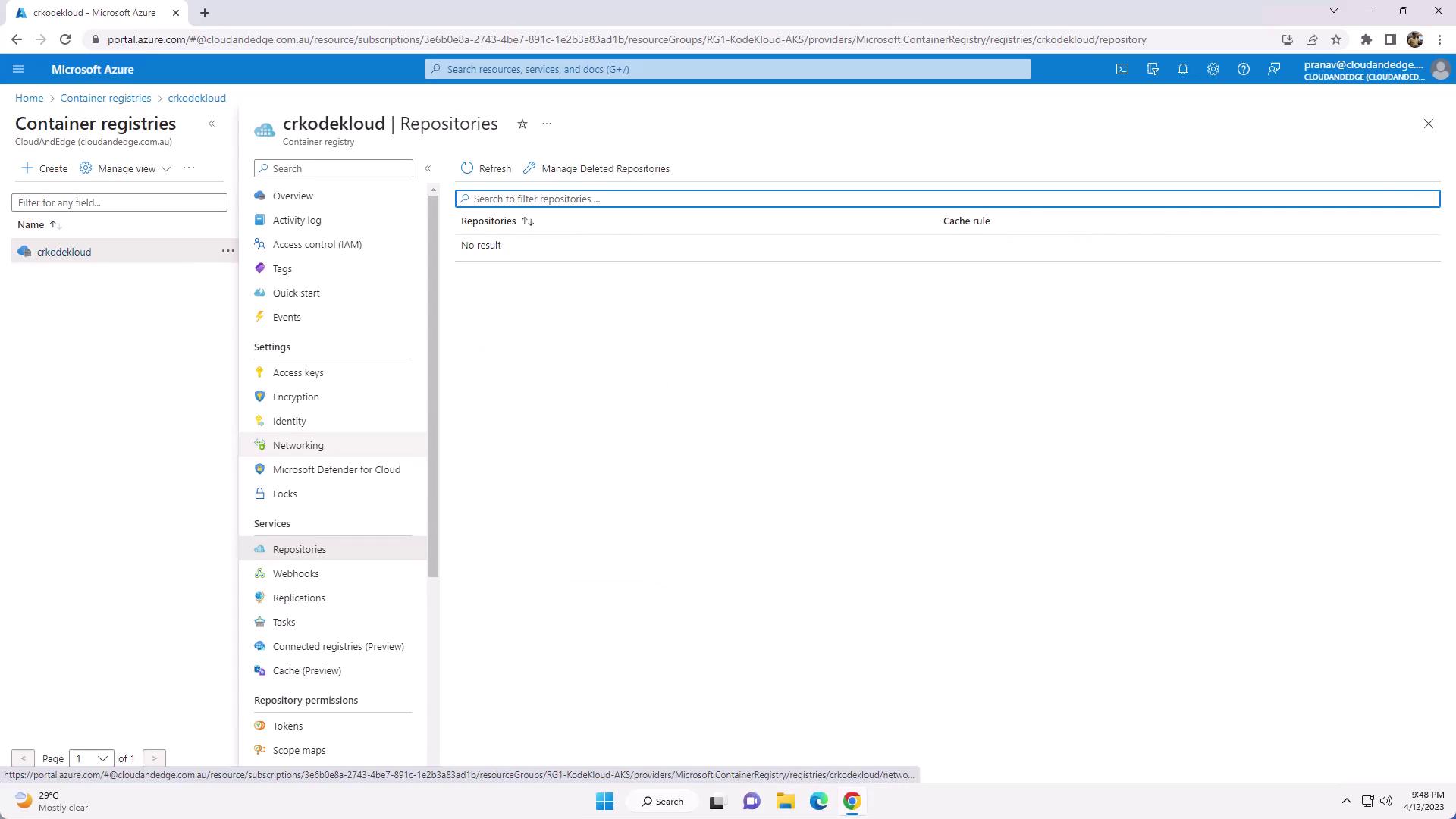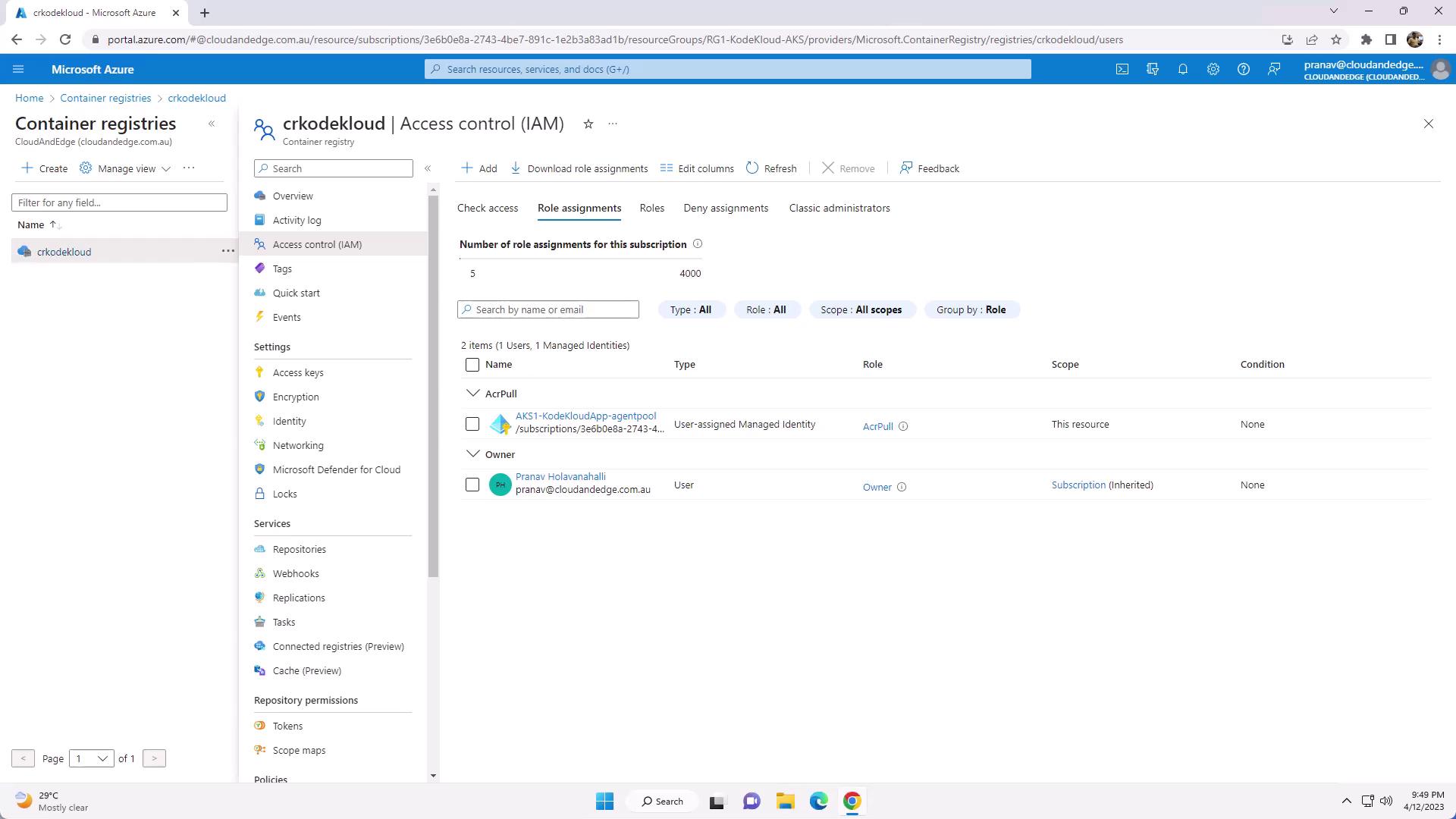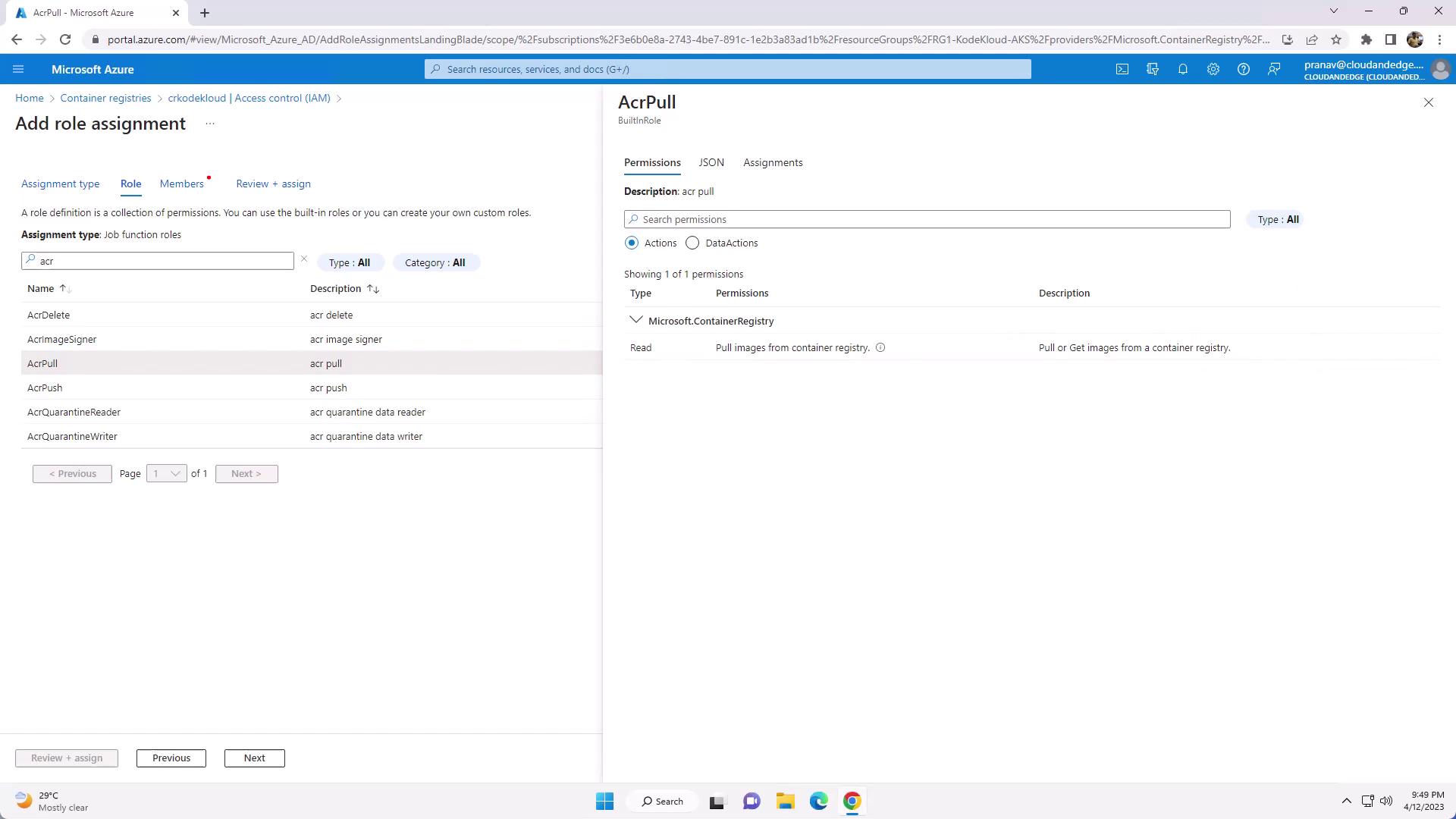Azure Kubernetes Service
Working with AKS
Pushing Image to ACR
A container registry is a service for storing and distributing container images and related artifacts. While Docker Hub is a popular public registry, Azure Container Registry (ACR) offers a fully managed, private registry with advanced features like geo-replication, content trust, and virtual network integration.
Azure Container Registry SKUs
ACR comes in three SKUs—Basic, Standard, and Premium—each varying by storage capacity, daily operations, and outbound bandwidth. As you move from Basic → Standard → Premium, quotas increase and additional features are unlocked.
Note
You can upgrade or downgrade between SKUs as long as your storage usage stays within the target tier’s quota.
Warning
Downgrading from Premium (200 GB) to Standard (100 GB) will fail if your registry exceeds 100 GB of stored artifacts.

For full details, see Azure Container Registry SKUs & pricing.
Provisioning and Access Control
When you create an AKS cluster with the Azure CLI or Portal, you can automatically provision an ACR instance and grant the cluster’s managed identity the AcrPull role. If you create your registry separately, assign roles as follows:
- In the Azure Portal, navigate to your Container Registry.
- Open Access Control (IAM) → Role assignments.
- Filter by “ACR” to see built-in roles: AcrPull, AcrPush, Owner.
- Click Add role assignment, select the appropriate role, and assign it to your AKS managed identity or service principal.



Built-in ACR Roles
| Role | Permissions | Description |
|---|---|---|
| AcrPull | registries/pull/read | Read-only access for pulling images |
| AcrPush | registries/push/write <br> registries/pull/read | Push and pull access |
| Owner | All container registry operations | Full control over the registry |
Here’s the JSON definition of the AcrPush role:
{
"id": "/providers/Microsoft.Authorization/roleDefinitions/8311e382-0749-4cb8-b61a-304f252e45ec",
"properties": {
"roleName": "AcrPush",
"description": "Allows push and pull operations in Azure Container Registry",
"assignableScopes": [ "/" ],
"permissions": [
{
"actions": [
"Microsoft.ContainerRegistry/registries/pull/read",
"Microsoft.ContainerRegistry/registries/push/write"
],
"notActions": [],
"dataActions": [],
"notDataActions": []
}
]
}
}
Tagging and Pushing Images to ACR
List your local Docker images:
PS C:\> docker image lsTag each image for your ACR:
PS C:\> docker tag kodekloudappcs:v1 crkodekloud.azurecr.io/kodekloudappcs:v1 PS C:\> docker tag kodekloudappcs:v2 crkodekloud.azurecr.io/kodekloudappcs:v2Verify the new tags:
PS C:\> docker image lsAuthenticate with your registry:
PS C:\> az acr login --name crkodekloud Login SucceededPush both tags:
PS C:\> docker push crkodekloud.azurecr.io/kodekloudappcs:v1 PS C:\> docker push crkodekloud.azurecr.io/kodekloudappcs:v2In the Azure Portal, go to your registry’s Repositories blade to confirm the image tags.
Deploying to Azure Kubernetes Service (AKS)
Deploy version v1 of your application directly from ACR:
kubectl create deployment kodekloudapp \
--image=crkodekloud.azurecr.io/kodekloudappcs:v1 \
--replicas=1
kubectl get deployment kodekloudapp
Expose the deployment via an Azure Load Balancer:
kubectl expose deployment kodekloudapp \
--type=LoadBalancer \
--port=80 \
--target-port=80
kubectl get service
Example output:
NAME TYPE CLUSTER-IP EXTERNAL-IP PORT(S) AGE
kodekloudapp LoadBalancer 10.0.199.121 20.247.251.108 80:30895/TCP 2m
kubernetes ClusterIP 10.0.0.1 <none> 443/TCP 2d
Open the EXTERNAL-IP in your browser to verify the application is running.
Links and References
Watch Video
Watch video content